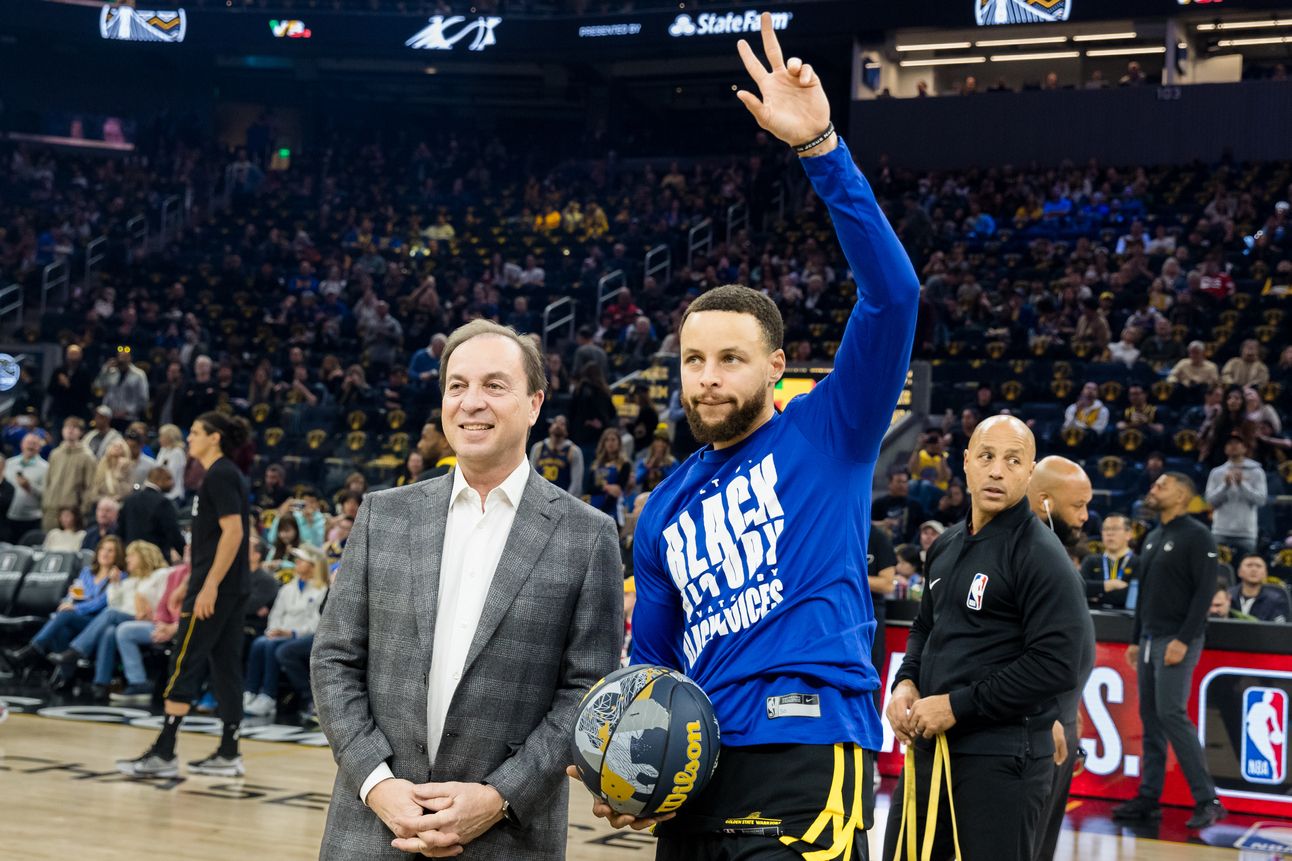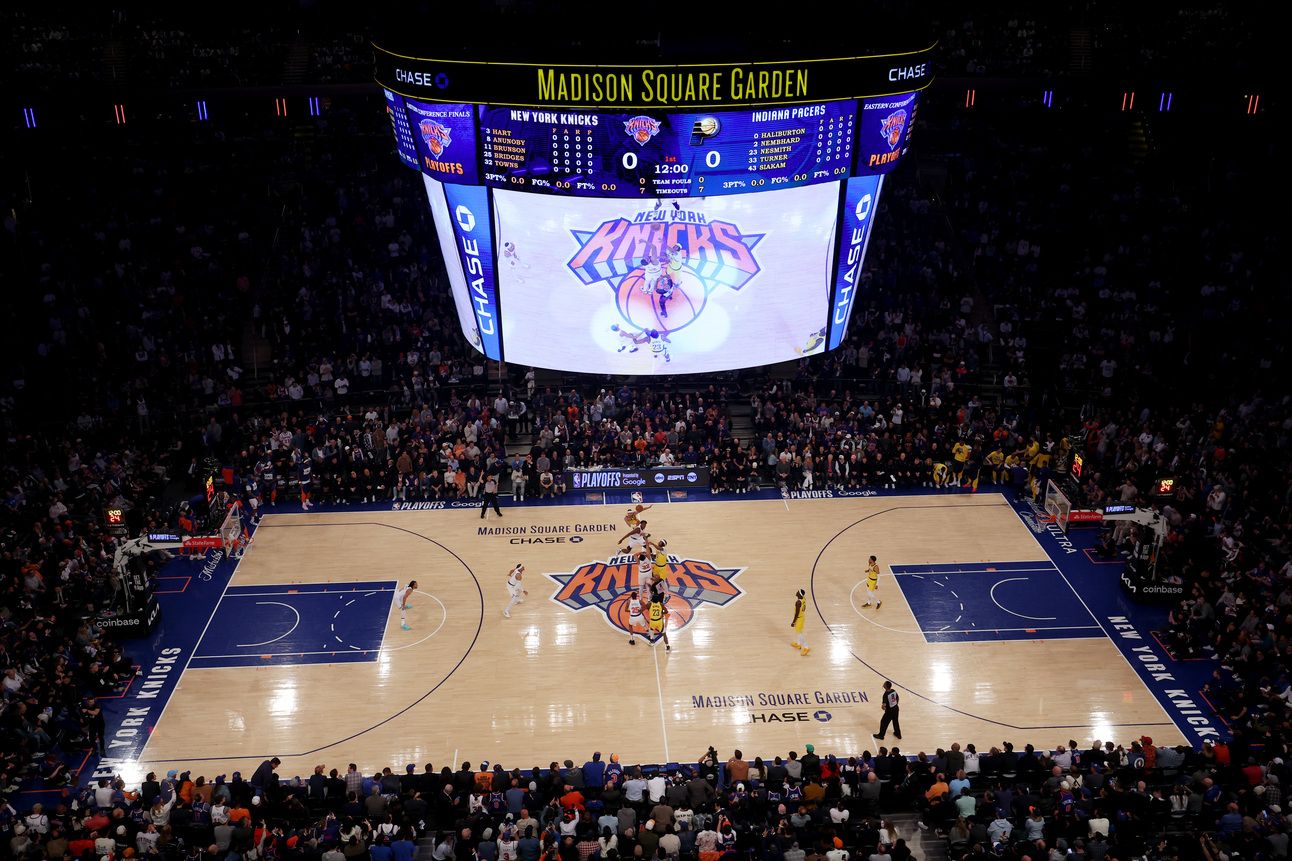- Buckets and Riches
- Posts
- More Than a Game: How NBA Teams Became Goldmines
More Than a Game: How NBA Teams Became Goldmines

Welcome to Buckets and Riches — where NBA stars don’t just shoot threes, they stack Gs. From tunnel fits worth mortgages to endorsement empires and crypto hiccups, we break down how basketball’s elite earn it, flex it, and sometimes… brick it. 🏀💸
The latest edition of our newsletter covers:
The League’s Wealthiest Teams
The Faces Behind the Empire
Building Basketball’s Grandest Stages
Expansion Dreams, Billion-Dollar Bills

💸Money Machines
The Most Valuable Teams in NBA History

In February, CNBC released its official NBA team valuations, and the numbers will make your head spin. The Golden State Warriors, with a staggering $9.4 billion valuation, were No. 1, followed by the New York Knicks at $7.5 billion, the Los Angeles Lakers at $7 billion, the Chicago Bulls at $5.8 billion, and the Houston Rockets at $5.7 billion.
Surprisingly, the Boston Celtics didn’t make the top five. They came in at seventh with a still-healthy $5.5 billion valuation. That didn’t hamper their sale for $6.1 billion in March, when their previous owner, Wyc Grousbeck, gave way to new owner Bill Chisholm.
CNBC’s list is only a few months old, but it’s already obsolete. The Celtics were the first evidence of that. But then the Lakers blew their longtime rivals’ sale price away when the Buss family fetched $10 billion from Dodgers owner Mark Walter last month.
Mark Walter is entering agreement to purchase majority ownership of the Lakers from the Buss family for a valuation of approximately $10 billion, the largest sale of a professional sports franchise in the world, sources tell ESPN.
$10 billion.
— Shams Charania (@ShamsCharania)
9:06 PM • Jun 18, 2025
Team valuations have skyrocketed in recent years, thanks largely to increasing rights fees from the NBA’s media deals. The new 11-year, $76 billion deal with Disney, NBC, and Amazon, which begins next season, will undoubtedly pump those values even higher.
That contract had to factor into the Lakers' sale, especially since, unlike the Warriors, the Lakers don’t even own their stadium. They do have the built-in advantage of being the league’s most famous team, and, along with the Celtics, its most historically successful.
The Warriors’ four titles since 2015, Silicon Valley ties, numerous sponsorship deals, and ability to generate revenue from non-basketball events are all reasons why they rank No. 1. Warriors owner Joe Lacob bought the team in 2010 for $450 million, which was a record at the time. Compare that to now, when the Memphis Grizzlies, which CNBC ranked as the least-valuable franchise in the league, is still worth $3.2 billion.
Though the explosion in value is a recent phenomenon, there has been a steady climb for decades. Dr. Jerry Buss bought the Lakers for $67.5 million in 1979, with the Buss family now selling its majority share, which leaves Herb Simon of the Indiana Pacers the league’s longest-tenured owner. He bought the team in 1983 for $11 million. According to CNBC, they’re now worth $3.4 billion, and that assessment was made before their Finals run.
Call your brokers, because owning an NBA team is indeed one of the best investments out there.

💰 Fortune Flex
The Tycoons of the NBA
While owning and running an NBA team may sound like fun to the average fan, it’s a risky endeavor that provides unique challenges. There are high costs, financial risks, and complexities that other business entities don’t face. The best owners find a way to juggle all of it while managing team success and financial growth.
Who are the best owners when it comes to financial gain? And how did they make their money? Let’s take a look at the top three wealthiest owners in the NBA today.
3. Dan Gilbert, Cleveland Cavaliers, $28.1 billion
Dan Gilbert has enjoyed a ton of success as the owner of the Cavs. He bought them in 2005, just two years after LeBron James was drafted, for $375 million. In the initial years, he saw his team reach the NBA Finals five times. However, they only won it once, in their legendary 2016 comeback.
Gilbert made his money by cofounding the largest mortgage lender in the US, Quicken Loans, whose name adorns the Cavs’ arena.
2. Miriam Adelson & Patrick Dumont, Dallas Mavericks, $34.6 billion
Adelson and her son-in-law, Dumont, bought their majority share of the Mavs for $3.5 billion in 2023 when Mark Cuban decided to sell. They experienced swift success, reaching the NBA Finals last year.
Miriam is the widow of Sheldon Adelson, who built and operated several casinos in Las Vegas and became a billionaire in the process. Two of the most notable establishments are the Venetian Las Vegas and the Sands Expo and Convention Center. Sheldon also owned the Marina Bay Sands luxury resort in Singapore. He passed away in 2021, and Miriam sold most of their properties the following year. She used the influx of cash to acquire the Mavs.
1. Steve Balmer, Los Angeles Clippers, $121.3 billion
Does it come as much of a surprise that the richest owner in the NBA is a tech mogul? Ballmer, the former CEO of Microsoft, stacked up a fortune there. He stepped down from the company in 2014 with a net worth of $20 billion, which he used to buy the Clippers. Most NBA fans may remember it as the time when Donald Sterling was forced to sell the team, which he did for $2 billion.
Ballmer is known as one of the most passionate owners in the league. He sits behind the basket for almost every Clippers game and is always super animated while watching. Sadly, that passion hasn’t equated to success, as he’s never seen his side reach an NBA Finals and only has one Conference Finals appearance in 2021. But that hasn’t stopped Ballmer from purchasing a new arena, offering a unique experience to the fans, and rebranding the team.

💸 Moneyball Moments
Jay-Z once owned less than 1% of the Brooklyn Nets, but helped rebrand the entire franchise. Despite holding just a 0.15% stake, his influence was massive: he helped design the team’s black-and-white logo and played a key role in the move from New Jersey to Brooklyn. He eventually sold his share to start his sports agency, Roc Nation Sports.

💰Billion Dollar Builds
How Much the NBA’s Showpiece Arenas Really Cost

NBA teams are spending big to give fans more than just a game. With rising franchise values and media deals, arenas have become billion-dollar investments.
Madison Square Garden leads all NBA arenas in total construction cost. It was originally built in 1968 for an impressive $100 million. In 2013, it underwent a major $1.1 billion renovation. When adjusted for inflation, the total cost of MSG stands at $2.4 billion. It remains the league’s oldest and costliest arena.
Next is the Intuit Dome, the new home of the Los Angeles Clippers. It opened in 2024 and cost $2 billion to build. Located in Inglewood, California, it includes over 300 EV charging stations, 199 game clocks, and a massive 38,000-square-foot LED Halo Board.
The Chase Center, home to the Golden State Warriors, cost $1.7 billion when it opened in San Francisco in 2019. The Barclays Center in Brooklyn ranks fourth at $1.4 billion, followed by Little Caesars Arena in Detroit at $1.1 billion.
Even older arenas are not cheap to modernize and maintain. The Kia Center in Orlando cost $480 million when it was built in 2008. A $226 million renovation in 2024 brought its total to $927.2 million.
Rounding out the top 10:
Wells Fargo Center (76ers) at $821 million
Toyota Center (Rockets) at $783.1 million
American Airlines Center (Mavericks) at $766.6 million
Crypto.com Arena (Lakers) at $566.3 million
As team values rise, arena costs follow. Renovating or rebuilding is no longer optional. For owners, it is the price of staying competitive.

🏀 Big Money Moves
The Hidden Cost of Starting Fresh: What Expansion Owners End Up Paying
The NBA is on the verge of adding two new teams, expanding from 30 to 32 franchises. The frontrunners are Las Vegas and Seattle.
Most headlines focus on the eye-popping $4–7 billion expansion fee, which is paid to the league and distributed among existing team owners as compensation for diluting their collective stake.
From there, the real spending begins.
Step one: Securing a home arena. Contributions toward a state-of-the-art venue can easily top $500 million and exceed $1 billion in some cases. Luxury suites, player facilities, and modern fan amenities all add up. Surrounding infrastructure, parking, transit, and retail compound the costs. Las Vegas, for instance, is eyeing a $10 billion NBA-ready arena. In Seattle, the already-renovated Climate Pledge Arena offers a potential shortcut.
Next up: Branding. A new team needs a name, logo, uniforms, and an identity that resonates with fans and sponsors. When the Raptors joined in 1994, the NBA charged just $300,000 for branding rights. Today? A full rollout campaign, complete with marketing, influencers, and merchandise production, can exceed $10 million.
Roster-building comes with its own price tag. Expansion teams draw from unprotected players around the league, but building a competitive squad requires serious investment in scouting, G League development, and front-office hires. That would easily cost $10-15 million annually or more.
And this doesn’t include coaching salaries, training staff, or the cost of managing a growing payroll.
While the expansion fee grabs attention, the true cost of joining the NBA ranks is measured in vision, execution, and staying power. You don’t just buy a team; you build an empire from the ground up.
